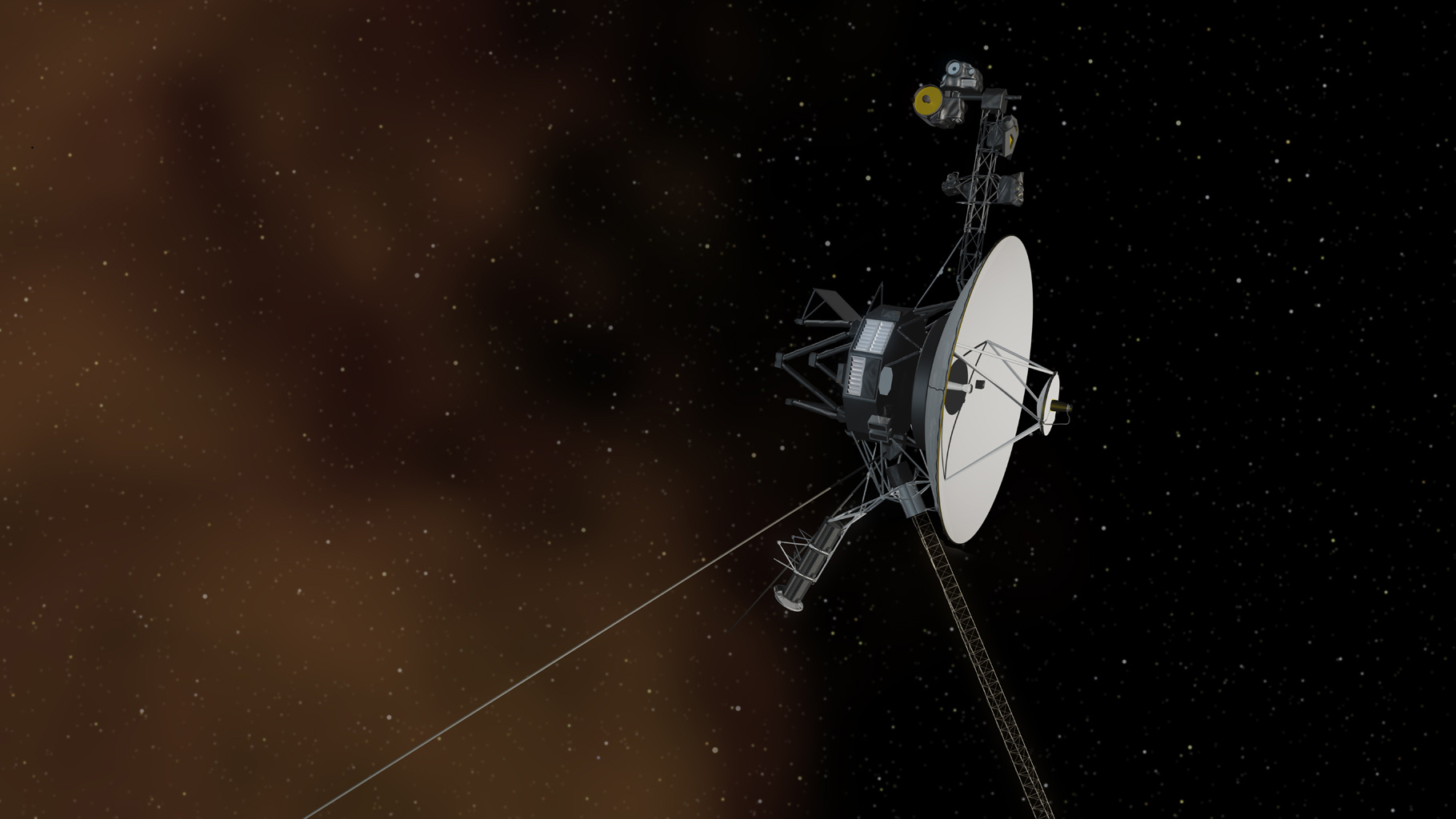Voyager 2 is gathering science data again after recovering from a glitch in interstellar space

All five remaining instruments on NASA's venerable Voyager 2 spacecraft are back to gathering science data after power overuse in late January interrupted the probe's operations.
NASA made the announcement yesterday (March 3), over a month after the incident occurred. Troubleshooting for the spacecraft is a slow process because of its distance from Earth; it takes 17 hours for each command to reach the probe and for data indicating its efficacy to reach engineers.
"Voyager 2 has returned to normal operations following the anomaly on Jan. 25, 2020," NASA officials wrote in a statement. "The five operating science instruments, which were turned off by the spacecraft's fault protection routine, are back on and returning normal science data."
Related: Voyager at 40: 40 photos from NASA's epic 'grand tour' mission
Voyager 2, like its twin Voyager 1, launched in August 1977 and has been exploring ever since. Such extensive space travel takes its toll; as the spacecraft have long exceeded their mission expectancy, engineers have needed to improvise ways to keep the probes going, particularly as their power supplies dwindle.
The January problem occurred when Voyager 2 missed a spin maneuver to calibrate its magnetic-field instrument. That glitch left two power-hungry systems on simultaneously; the spacecraft recognized the risk of the situation and triggered a preprogrammed fault-protection mode.
Since then, mission engineers have been working to turn off the power-sucking systems and to get Voyager 2's five remaining science instruments back to work. Those instruments are helping scientists understand what happens beyond the heliosphere, the bubble of space influenced by our sun. Voyager 2 left that bubble in November 2018, entering interstellar space.
Get the Space.com Newsletter
Breaking space news, the latest updates on rocket launches, skywatching events and more!
- Photos from NASA's Voyager 1 and 2 probes
- Voyager 1's historic flyby of Jupiter in photos
- Voyager 1 spacecraft's road to interstellar space: a photo timeline
Email Meghan Bartels at mbartels@space.com or follow her @meghanbartels. Follow us on Twitter @Spacedotcom and on Facebook.
OFFER: Save at least 56% with our latest magazine deal!
All About Space magazine takes you on an awe-inspiring journey through our solar system and beyond, from the amazing technology and spacecraft that enables humanity to venture into orbit, to the complexities of space science.
Join our Space Forums to keep talking space on the latest missions, night sky and more! And if you have a news tip, correction or comment, let us know at: community@space.com.

Meghan is a senior writer at Space.com and has more than five years' experience as a science journalist based in New York City. She joined Space.com in July 2018, with previous writing published in outlets including Newsweek and Audubon. Meghan earned an MA in science journalism from New York University and a BA in classics from Georgetown University, and in her free time she enjoys reading and visiting museums. Follow her on Twitter at @meghanbartels.
-
TinCanSailor Vger lives! I was excited to hear the news... she was launched about the time I started driving, and I'm in my late 50s now. They built these to last back in the day! I hope she is still talking to us in another 40 years.Reply -
UnivacTech Was very happy to be a part of this program for 11 yrs from 1983 to 1994 at JPL in Pasadena, CA. Worked on old Sperry Univac mainframes that processed the telemetry data from Voyager 1 and Voyager 2. Greatest job I ever had.Reply










